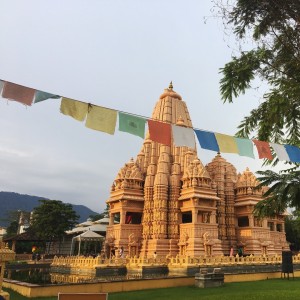A lot has happened since I have last blogged. I am now halfway through week 6 here in Nepal. I cannot believe how fast time has gone. I am almost halfway through my experience here. So here are a few updates before I get into the details of what is happening on the other side of the world.
- I am still not use to the staring, everyone stares, all the time, if you were to enter a staring contest with a Nepali you would lose
- There is no such thing as personal space, it does not exist, I am slowly starting to get use to that
- Sometimes you need American comfort food and for me that comes in the form of a snickers.
- I fall more and more in love with the country, this culture, and these people everyday. It is a pure joy and honor to work along side and serve this country and the Nepali people.
- On a clear day I can see the HIMALAYAS from the porch outside my room. THE HIMALAYAS PEOPLE THE HIMALAYAS. I CAN SEE THEM FROM MY ROOM, I am miles and miles away in the southern most part of the country, and I can see the most northern part of the country. Amazing.
On to the medical side of life here in Nepal. During week five I shadowed a gastric doctor in the OPD (out patient department). I have seen more butts and more GI tracts than I probably will in my whole life. It was very fascinating to watch endoscopies and colonoscopies. I have never witnessed them before so this was a first. The doctor I shadowed spoke very very very good English so it was easy to learn from him. Some common cases we would see are peptic ulcer from either H. Pylori or use of NSAIDS; many patients who would come in with gastritis would get a biopsy to test for H. Pylori. Hepatitis is very common here, mostly alcoholic hepatitis. We saw many patients that were alcoholics with jaundice sclera. Drinking in Nepal, as well as smoking, is a very common problem. The doctor describe this as when the sun goes down Nepal comes out. Cirrhosis of the liver is a problem here. Many patients I assessed had enlarged livers and enlarged spleens. Another common problem is GERD due to how spicy the food is here, the food is VERY spicy. Everyday we would go on rounds to the wards. There were a few cases of tuberculosis ascites, due to finding no other explanation as to why the patient has ascites, which I had never heard of so I did some research. You treat this the same way you treat TB with a six month medication plan, and if the ascites starts to improve you know it is TB ascites. To discuss what OPD is like would be like a CVS minute clinic on steroids. Patients show up around 8am in the morning and the doctor tries to see as many patients before 4:30, while also spending two hours on rounds between the gastro ward and both MICUs. It is a very stressful environment. It is not very private as people walk in and out of the office, sometimes even multiple patients sitting in the office while the doctor is discussing the illness of the patient he is currently seeing. The biggest learning experience for me during this rotation was we had a patient with an upper GI bleed. He complained of black, tarry, foul smelling stool. The doctor did an endoscopy and found the bleed in the first part of the duodenum. He injected epinephrine (they call it adrenaline). The patient was then admitted to the ICU and all receive a PPI drip. He will be NPO for three days. After many endoscopies and colonoscopies of people complaining of GI bleeds and finally finding one was very fascinating and exciting. As the bleed popped up on the screen the doctor and I said at the same time, there it is. During one of the colonoscopies the doctor was able to get to the small intestine. The inside of the small intestine looked like a fluff ball. All the villi on the inside excited and ready to absorb all and anything. I learned a lot in gastro about upper and lower GI bleeds, how you treat them, how you treat gastritis and GERD; it was a fascinating experience to be in the OPD with walk in, non admitted patients.
This past weekend we stayed and Chitwan and explored some of the local sacred places and temples. On Saturday we took a magic bus to Devghat Dham. We hiked across a suspension bridge and back to the other side of the river where the temple was located. Devghat Dham. This area is located at the intersection of the Seti and Narayani Rivers and is one of the holiest places in Hindu mythology. On Sunday we went to Shashwat Dham. Shashwat Dham is a destination for all to attain spiritual strength, get exposed to the external knowledge passed over generation, and experience the true nature of our inner being which is love and joy.
These are pictures from Devghat Dham:
These are pictures from Shashwat Dham:












So hard to believe you are 1/2 way through your journey. Thanks for your journaling and photos! Certainly makes you feel a lot closer than you are, accentuating the fact that our world is smaller than we think. Love you!